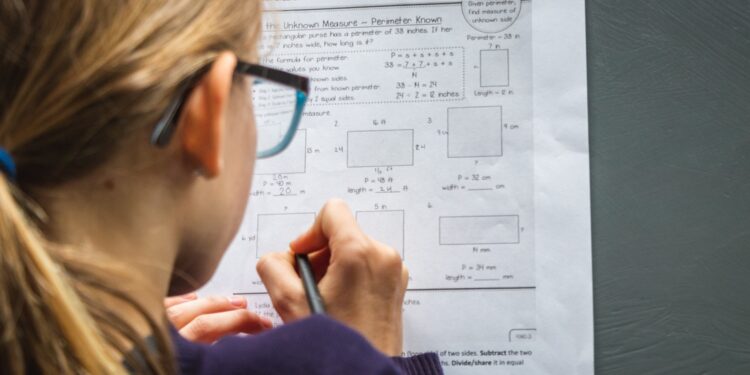Dr Jonathan Kenigson, FRSA Don of Research, Athanasian Hall, Cambridge Limited
Mathematicians have frequently debated the existence of a closed-form solution to the number of partitions of an integer n into k distinct parts. If n is a positive integer, a partition of n is a way of writing n using only positive summands without regard to the order of the summands. For instance, the partitions of 3 are 1+1+1, 2+1, and 3; the partitions of 4 are 1+1+1+1, 2+1+1, 2+2, 3+1, and 4. Finding a closed form for the number of partitions of an integer n was elusive until 1937, when Rademacher provided a complicated but convergent series. Rademacher’s solution was based heavily on Hardy and Ramanujan’s work from 1918. His solution – though stunningly elegant and deeply inspired by Apollonian Geometry – is very difficult to generalize. Here is how I might propose to generate new closed forms for all k-weighted partitions of n (partitions of n into k parts) while avoiding explicitly geometric notions present in the original proof and making use of modern Algebraic Number Theory, Analytic Combinatorics, and Complex Analysis. My training lies partially in the Combinatorics of the Riemann Zeta Function, so I shall restrict my attention to advances in this paradigm made in Russia since the time of Prudnikov in the 1980s and culminating in Hurwitz generalizations of Zeta that have admitted globally convergent canonical representations since 2018.
Scholium I. Haec dicta sunt summatim affirmant. Symmetries of the upper half of the coordinate plane are essential to Rademacher’s proof. Several key elements of the proof are the behavior of modular forms on the upper-half-plane, which is in turn effectively equivalent to the study of representations of the Dedekind Eta Function in terms of modular discriminants (Rademacher 1937). This approach was featured in the Proceedings of the London Mathematical Society and was a strict generalization of the Ramanujan-Hardy paradigm.
Scholium II. Haec dicta sunt summatim affirmant. The functions in the proof can be defined in terms of differential equations on the Complex Plane. By “Differential Equation,” I connote an equation whose rate of change depends upon a given function whose behavior must be determined. Modular discriminants are, in turn, intimately related to Weierstrass (W) Elliptic functions representable by first-order nonhomogenous differential equations whose discriminant is a difference of cubes. It is instructive to consider the Elliptic Functions over the entire Complex domain modulo the lattice of Gaussian Integers (Apostol 1976). In this case, uniform convergence is guaranteed.
Scholium III. Haec dicta sunt summatim affirmant. I can, with sufficient care, write every admissible W- Function as an infinite sum of other infinite sums, the behavior of both of which is well-known. The W-Function then has a Laurent Representation on the restricted domain whose coefficients are the Complex Eisenstein Series. These series are themselves intimately related to integral representations of modular forms (Rodriguez & Kra 2012).
Scholium IV. Haec dicta sunt summatim affirmant. I can write every admissible W-function as a waveform whose behavior is defined by quantities from basic Trigonometry – the study of triangles. In fact, every W-function has two distinct invariants that are expressible as Fourier Series of weight functions of the Eisenstein Series. Because the convergence of Fourier Series is well-known, explicit values can be obtained for the coefficients. These are the k-weighted Divisor Functions multiplied by powers of the nome, which is to say, exponentials of a Complex argument (Apostol 1976), which in Complex Geometry is representable in-turn as a trigonometric expansion by Euler’s Theorem (see Moskowitz 2002 for an exploration of Euler’s Theorem).
Scholium V. Haec dicta sunt summatim affirmant. I can use Ramanujan Summation to represent the Divisor Functions as infinite series. Each of these Divisor Functions is, in turn, representable in a manner that Ramanujan would have understood in 1918 – the so-called Ramanujan Sums c_m(n). Each of these sums runs over integers comprime to m and bounded by above by m (Nicol 1962). By Fermat’s Little Theorem, these sums form a multiplicative finite field whose cardinality is the Euler Totient of m multiplied by powers of the nome. One may then consider the representation of the Divisor Functions in terms of the Ramanujan Sums (Krätzel 1981).
Scholium VI. Haec dicta sunt summatim affirmant. I can relate Ramanujan Summation to Zeta Analysis. A theorem – won after some detailed arguments from Complex Analysis – is that every k-weighted Divisor Function of a positive integer n is expressible in terms of a product of the Riemann Zeta Function evaluated at an integer value (in particular 1+m) and a Dirichlet-Like Series running over all possible values of the Ramanujan Sums multiplied pointwise by the terms of Zeta(1+m) (Krätzel 1981). Because Zeta(1+m) is always compactly representable in terms of special sequences (Harmonic, Bernoulli, Cauchy, etc.), a host of new closed forms may be afforded by the representations of the Zeta Function (Hasse 1930).
Works Consulted.
N.B. The list furnished here is by no means exhaustive. The primary objective in the selection of these sources is the degree of clarity and economy in exposition present in each.
Apostol, Tom M. (1976), Modular functions and Dirichlet series in number theory (in German), New York: Springer-Verlag, p. 11
Hasse, Helmut (1930). “Ein Summierungsverfahren für die Riemannsche ζ-Reihe” [A summation method for the Riemann ζ series]. Mathematische Zeitschrift (in German). 32 (1): 458–464.
Krätzel, E (1981). Zahlentheorie. Berlin: VEB Deutscher Verlag der Wissenschaften. p. 130. (German)
Moskowitz, Martin A. (2002). A Course in Complex Analysis in One Variable. World Scientific Publishing Co. p. 7.
Nicol, C. A. (1962). “Some formulas involving Ramanujan sums”. Can. J. Math. 14: 284–286.
Rademacher, Hans (1937), “On the partition function p(n)“, Proceedings of the London Mathematical Society, Second Series, 43 (4): 241–254
Rodriguez, Rubi; Kra, Irwin; Gilman, Jane P. (2012), Complex Analysis: In the Spirit of Lipman Bers, Graduate Texts in Mathematics, vol. 245, Springer, p. 12


















